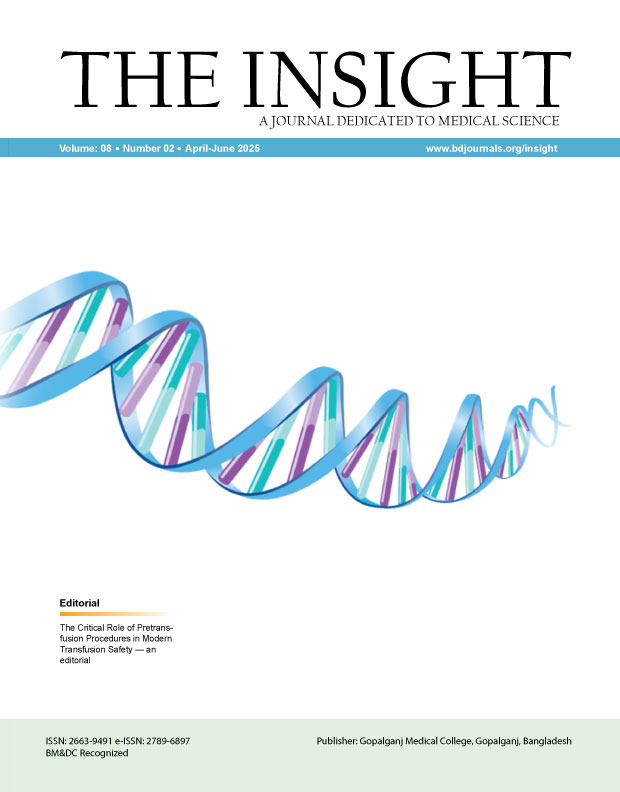Abstract
Introduction: Pleural effusion, the accumulation of excess fluid in the pleural cavity, is a common cause of respiratory morbidity in children and can result from a variety of infectious and non-infectious conditions. In the pediatric population, parapneumonic effusion and tuberculous pleural effusion are among the most frequently encountered causes, each with distinct cytological and biochemical profiles. This study aims to evaluate the pleural fluid cytology and biochemical parameters in children with pleural effusion. Methods & Materials: This cross-sectional study was conducted at the Department of Pediatric Respiratory Medicine, Bangladesh Shishu Hospital and Institute, Dhaka, from July 2019 to January 2022. A total of 58 children from 1 to 18 years of age admitted with pleural effusion were selected as study subjects. Data were analyzed using the Statistical Package for the Social Sciences (SPSS) version 26.0. Result: Among the 47 study patients, parapneumonic effusion (63.8%) was the most common cause of pleural effusion, followed by tuberculous pleural effusion (36.2%). Pleural fluid analysis showed that TPE cases had significantly lower total cell counts and polymorph percentages, but higher lymphocyte percentages compared to non-TPE cases (P <0.001). Glucose levels were also significantly lower in TPE (P <0.001), while protein and LDH levels did not differ significantly between the groups. Conclusion: Analysis of pleural fluid cytology and biochemical profiles in pediatric pleural effusion revealed that tuberculous pleural effusion is characterized by significantly higher lymphocyte percentages and lower polymorphonuclear cell counts, along with reduced glucose levels and lower total cell counts, compared to non-tuberculous effusions.

This work is licensed under a Creative Commons Attribution 4.0 International License.
Copyright (c) 2025 The Insight





 PDF
PDF